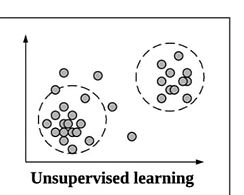What is Unsupervised Learning?
Unsupervised learning is a branch of machine learning where the algorithms learn patterns and structures in unlabeled data. Unlike supervised learning, there are no predetermined labels or target outputs provided during the training process. Instead, the algorithms explore the data on their own to discover inherent patterns, relationships, or clusters.
In unsupervised learning, the goal is to uncover hidden structures within the data, gain insights, and make inferences without explicit guidance or predefined outcomes. It is often used for exploratory data analysis, data visualization, and feature extraction.
Common techniques used in unsupervised learning include:
-
Clustering: Clustering algorithms group similar data points together based on their inherent characteristics. It helps identify patterns and discover natural groupings within the data.
-
Dimensionality Reduction: Dimensionality reduction techniques aim to reduce the number of features or variables in the dataset while preserving important information. This helps simplify the data representation, remove noise, and facilitate better visualization or analysis.
-
Anomaly Detection: Anomaly detection algorithms identify unusual or abnormal data points that deviate significantly from the expected behavior. It is useful for detecting fraud, identifying outliers, or flagging anomalies in large datasets.
-
Association Rule Mining: Association rule mining uncovers relationships or associations between items or variables in a dataset. It is commonly used in market basket analysis, recommendation systems, and understanding customer behavior.
Unsupervised learning is valuable in scenarios where the data is unlabelled or when the goal is to explore and gain insights from the data without specific target outcomes. It can reveal underlying structures and patterns that may not be apparent through manual analysis. Additionally, unsupervised learning techniques can often serve as a precursor or complement to supervised learning tasks, providing valuable insights for subsequent modeling and decision-making processes.
Supervised vs. Unsupervised
Supervised Learning

-
Algorithms are trained using labeled data.
-
Supervised learning is a simpler method.
-
Unsupervised learning is computationally complex
Unsupervised Learning

-
Algorithms are used against data which is not labelled
-
Unsupervised learning is computationally complex
-
Less accurate and trustworthy method.